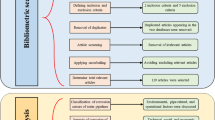Abstract
Offshore pipelines perform crucial role in energy industry. The safe exploitation of subsea pipelines is one of the most important issues. Therefore, it is necessary to minimize technological risks in order to avoid undesirable situations resulting from oil and gas spills in subsea pipelines. Ensuring the safety of subsea pipelines is one of the most important factors. As about 2/3 of the world is under deep-water, the main energy sources are also under water. The paper investigates the causes of accidents (corrosion, natural disaster, material, operation process) in subsea pipelines. The purpose of the study is to investigate the most common accidents in subsea pipelines, to identify the main risk factors, to develop an algorithm and to calculate its weight factors in accordance with the triangular Fuzzy AHP (Analytical Hierarchy Process). A special algorithm was developed to determine the risk factors in four categories. Then, according to the algorithm, evaluation index system, relative importance language scale, judgement matrices was established and calculations were performed with the fuzzy analytical hierarchy process, degree of possibility and relative criteria weight factors were shown. As a result, risk weight factors were shown in 4 categories and the most affected factor was determined. The result of the study was that the potential source of accidents on subsea process lines was investigated.
Access this chapter
Tax calculation will be finalised at checkout
Purchases are for personal use only
Similar content being viewed by others
References
Aliev, R.A., Alizadeh, A.V., Huseynov, O.H.: An introduction to the arithmetic of Z-numbers by using horizontal membership functions. Procedia Comput. Sci., Elsevier, Netherlands, 120, 349–356, (2017) https://www.sciencedirect.com/science/article/pii/S1877050917324614
Ismayilova, H.G., Farzalizada, Z.I., Damirova, J.R., Alakbarov, Y.Z., Shahlarli, M.E.: Fuzzy Assessment of Technological Risks in the Main Oil Pipeline. In: Aliev, R.A., Yusupbekov, N.R., Kacprzyk, J., Pedrycz, W., Sadikoglu, F.M. (eds.) WCIS 2020. AISC, vol. 1323, pp. 127–131. Springer, Cham (2021). https://doi.org/10.1007/978-3-030-68004-6_16
Muhibauer, W.K.: Pipeline Risk Managament Manual. Guff Publishing Company, p. 256 (1992)
Aliev, R.A., Gardashova, L.A.: Z-set based approach to control system design. In: Aliev, R.A., Kacprzyk, J., Pedrycz, W., Jamshidi, Mo., Babanli, M., Sadikoglu, F.M. (eds.) ICAFS 2020. AISC, vol. 1306, pp. 10–21. Springer, Cham (2021). https://doi.org/10.1007/978-3-030-64058-3_2
Kahraman, T.: Ertay: A fuzzy optimization model for QFD planning process using analytic network approach”. Europ. J. Operat. Res. 171, 390–411 (2006)
Aliev, R.A., Pedrycz, W., Fazlollahi, B., Alizadeh, A.V., Guirimov, B.G., Huseynov, O.H.: Fuzzy logic-based generalized decision theory with imperfect information. Inform. Sci., Elsevier, 189, 18–42 (2012) Sun, B. D., Tang, J. C., Yu, D. H., Song, Z. W., Wang, P. G.: Ecosystem health assessment: a PSR analysis combining AHP and FCE methods for Jiaozhou Bay, China. Ocean Coastal Manag. 168 41–50. (2019). https://doi.org/10.1016/j.ocecoaman.2018.10.026
Mirzakhanov, V.E.: Value of fuzzy logic for data mining and machine learning: a case study. Expert Syst. Appl. 162 113781 (2020) https://doi.org/10.1016/j.eswa.2020.113781 https://doi.org/10.1016/j.eswa.2020.113781
Mirzakhanov, V.E., Gardashova L.A.: Modification of the Wu-Mendel approach for linguistic summarization using IF-THEN rules. J. Experiment. Theor. Artif. Intell. 31(3), 77–97 (2019). https://doi.org/10.1080/0952813X.2018.1518998
Xiaofeng, G.: Risk Assessment of pipeline failure based on fuzzy analytic hierarchy process. IOP Conf. Ser.: Earth Environ. Sci., 384 (1), 012010 (2019)
Shukri, F.A.A., Isa, Z.: Ranking fuzzy numbers with fuzzy analytical hierarchy in risk assessment. Civil Eng. Architect. 8(4), 669–705 (2020)
Author information
Authors and Affiliations
Corresponding author
Editor information
Editors and Affiliations
Rights and permissions
Copyright information
© 2023 The Author(s), under exclusive license to Springer Nature Switzerland AG
About this paper
Cite this paper
Ismayilova, H., Shahlarli, M., Ismayilova, F. (2023). Investigation of Submarine Pipeline Failure Accidents in Deepwater Based on the Fuzzy Analytical Hierarchy Process. In: Aliev, R.A., Kacprzyk, J., Pedrycz, W., Jamshidi, M., Babanli, M.B., Sadikoglu, F. (eds) 15th International Conference on Applications of Fuzzy Systems, Soft Computing and Artificial Intelligence Tools – ICAFS-2022. ICAFS 2022. Lecture Notes in Networks and Systems, vol 610. Springer, Cham. https://doi.org/10.1007/978-3-031-25252-5_52
Download citation
DOI: https://doi.org/10.1007/978-3-031-25252-5_52
Published:
Publisher Name: Springer, Cham
Print ISBN: 978-3-031-25251-8
Online ISBN: 978-3-031-25252-5
eBook Packages: Intelligent Technologies and RoboticsIntelligent Technologies and Robotics (R0)




